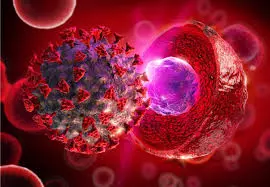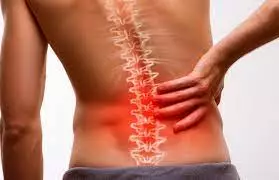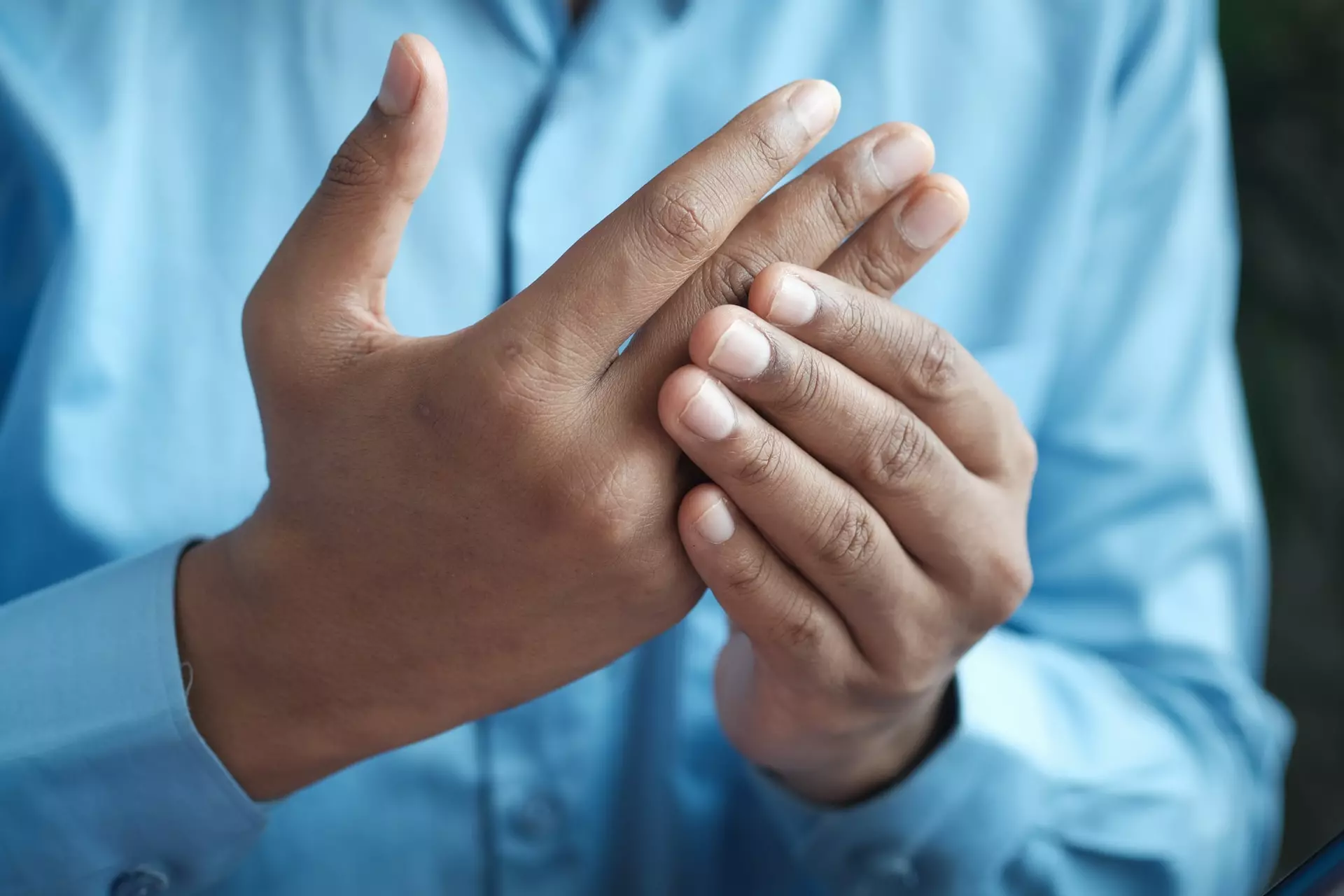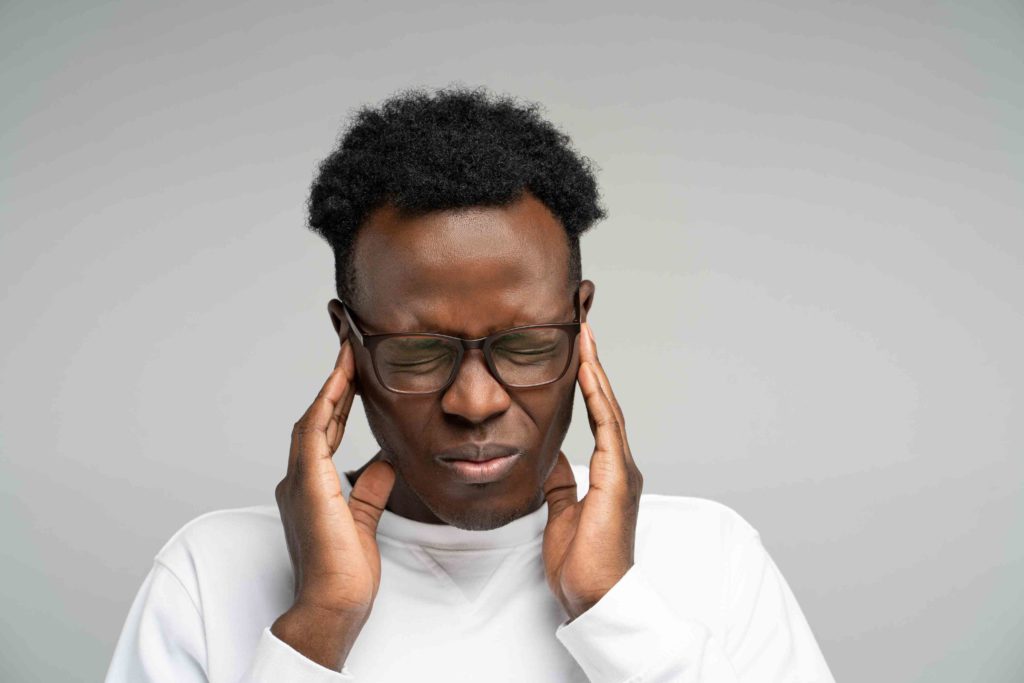Stem Cell Therapy For Back Pain
What Are Stem Cells?
Stem cells are cells that are found in your body. These divide and differentiate to form different cells. Stem cells are found in adult tissues and are categorized into two –
- Embryonic stem cells
- Adult stem cells
Under appropriate conditions, stem cells divide in the body or in a laboratory to form more cells. These are called daughter cells. These cells either differentiate and become specialized cells with a more specific function, or self-renew to become new stem cells.
Daughter cells can become blood cells, heart muscle cells, brain cells, or bone cells. Stem cells are the only cells in the human body that can produce fresh cells naturally.
How Does Stem Cell Therapy Work?
Stem cell therapy is popularly known as regenerative medicine. The therapy promotes the repair of dysfunctional, diseased, or injured tissue with the help of either stem cells or their derivatives. Stem cells can be used to help people who might otherwise require organ transplantation – which can often take considerable time to receive and is limited.
Stem cells are grown in a laboratory by researchers. These are manipulated to specialize into a specific type of cells, such as blood cells, heart muscle cells, or nerve cells. The specialized cells are then implanted into a person. For instance, patients with heart disease will have the cells injected into their heart muscle. The transplanted cells will then contribute to repairing the defective heart muscle.
What Other Conditions Can Be Treated With Stem Cell Therapy?
Various injuries or conditions can be treated by stem cell therapy. These include –
- Osteoarthritis
- Knee Pain
- Hip Arthritis
- Meniscus Tears
- Shoulder Pain
- Labral Tears
- Tendonitis
- Torn Rotator Cuff
- Chronic Back and Neck Pain
- Wrist and Elbow Pain
- Non-healing Fractures
Treating Lower Back Pain
Lower back pain can be extremely difficult to treat and is the leading cause of work-related disability. Almost 80% of adults experience back issues at some point in their lives. Additionally, lower back pain is the third most common condition in the United States.
Back pain conditions can be narrowed down, but can’t be pinpointed to a certain condition or cause. No individual tests can’t clearly define what the cause of backache is.
Despite the issue with a specific diagnosis, pain management is an important part of treating lower back pain. Various options include –
Medication
- Pain killers – either oral or topical
- Muscle relaxants
- Low doses of antidepressants can relieve certain forms of backaches
- Steroid injections
Physical Therapy
Physical therapy treats back pain in numerous ways – from muscle release, electrical stimulation, and ultrasound treatment. Special therapists also give you exercises to do at home that strengthen your back muscles along with your core. This helps effectively support your spine, reducing pain from use.
Alternative Therapy
A lot of people opt to supplement their treatments with alternative forms of therapy, like, acupuncture, massage, chiropractic, and yoga.
Surgery
If conservative methods of treating back pain fail and if your back pain is coming from a structural issue, your doctor might advise surgery. If the issue is a herniated disc, the surgery is minimally invasive – this removes the part of the herniated disc that is causing pain by pressing against the nerve.
These surgeries generally have a high success rate – about 80% or more. However, patients prefer to pursue alternative therapies.
What Can Stem Cells Do For Back Pain?
While in theory, stem cell treatment might not have any limitations, it might not be the same in reality. Although massic amounts of testing and research are yet to be done, scientists believe that stem cell therapies may apply to an extensive list of diseases someday. One of these diseases is degenerative disc disease and the accompanying back pain.
Since stem cells can develop into any type of cell in the body, they can be valuable for treatment and the healing process. When injected in between the intervertebral discs, stem cells can cause an immunomodulatory and anti-inflammatory effect. This, in turn, alleviates some of the pain the patient is experiencing, along with slowing down the process of degeneration.
Stem cell therapy also decreases any downtime post-injury and allows the patient to avoid painful rehab.
How Does Stem Cell Therapy Work For Back Pain?
Stem cell therapy, as mentioned earlier, is a regenerative therapy. This means that it helps the degenerated tissues repair themselves – in this case, the intervertebral discs. The cells used in this treatment can –
- Develop into cells required to repair the disc
- Self-renew, so they keep working to heal
- Reduce pain through their anti-inflammatory properties
Stem cell therapy is the first therapy for back pain that relieves pain along with helping the damaged tissue to rebuild itself.
What Happens During Stem Cell Therapy Procedure?
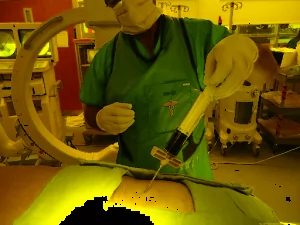
The majority of the time, stem cell therapy for back pain starts by harvesting the stem cells from the patient’s bone marrow.
The harvested cells are then put in a machine called the centrifuge. It processes the cells to create “Bone-Marrow Aspirate Concentrate” or BMAx. This contains the required stem cells along with growth factors and platelets (rich with the growth factor) to help rebuild the damaged tissue.
Once the concentrate is ready, your experienced physician will use a syringe to inject the compound into the affected disc. This procedure is to be performed only by a highly skilled and specially trained physician because it is extremely delicate.
Fluoroscopy – which is a real-time X-ray technology – is used to ensure the correct placement of the injection.
After undergoing stem cell therapy, some patients might experience certain side effects while others might not. Fortunately, however, the side effects of stem cell therapy are relatively short-term and typically low risk. These include –
- Bleeding
- Infection
- Pain due to the affected tissues
- Pain caused by nerve inflammation
Remember to mention to your physician any other medications you might be taking. These may weaken your immune system and, in turn, can cause a pesky infection.
One of the most important steps in the home buying process is securing financing. Whether you’re a first-time homebuyer or a seasoned pro, it’s important to understand your options and find the right lender. For some helpful tips and advice on securing a mortgage, check out https://www.webuyhouses-7.com/oregon/we-buy-homes-tillamook-or/.
You can find out more about stem cell therapy for back pain at the OrthoCure clinic by getting in touch with us. Give us a call at (612) 800-5096.
How Cellular Therapy helps in Ehlers-Danlos Syndrome?
What Is Ehlers-Danlos Syndrome?
Ehlers-Danlos syndrome, or EDS, is a group of disorders that affect the connective tissues in the body. The tissues include blood, bone, fat, and cartilage. These tissues are responsible for supporting other tissues and organs in the body.Ehlers danlos syndrome
Connective tissues are complex protein mixtures along with other substances. These provide elasticity and strength to the body’s underlying structures.
What Are The Symptoms Of Ehlers-Danlos Syndrome?
Doctors have classified Ehlers-Danlos syndrome into 13 different types based on –
- The notable features
- The parts where the symptoms appear on the body
Each type of EDS has its specific symptoms.
The most common form of EDS is hypermobile EDS, or Ehlers-Danlos hypermobility. The EDS symptoms for this are –
Overly flexible (hypermobile) joints
The connective tissue between joints is looser, so the joints move far beyond the normal range of motion. Dislocations and joint pain are extremely common.
Thin and stretchy skin
The weak connective tissue allows the skin to stretch beyond normal. People will be able to pull the skin up away from the flesh which snaps back when they let it go. The skin might also feel velvety and soft.
Fragile skin
Skin doesn’t heal well in hypermobile EDS. Additionally, patients experience excessive bruising.
Vascular Ehlers-Danlos Syndrome is a more severe form of the disease. In this, the walls of your blood vessels, uterus, and intestines can rupture. If you’re thinking of starting a family, speak to a genetic counselor before you do. This is because Vascular EDS can cause serious potential complications in pregnancies.
What Are The Causes Of Ehlers-Danlos Syndrome?
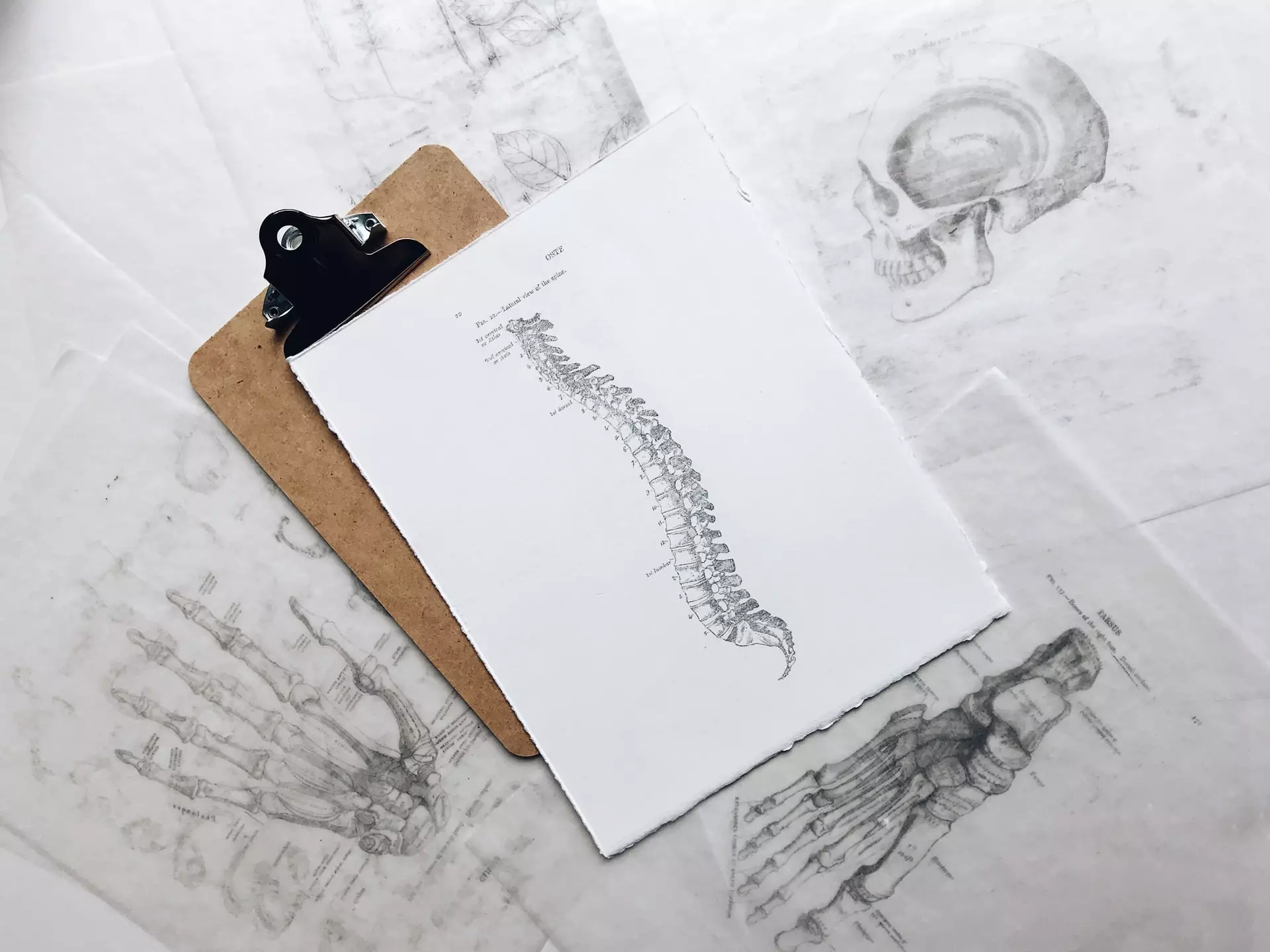 Collagen is the protein that adds strength and flexibility to connective tissues. A defect in collagen is the cause of Ehlers-Danlos Syndrome. The condition is genetic and people with the faulty gene have either weak or not enough normal collagen in their connective tissues.
Collagen is the protein that adds strength and flexibility to connective tissues. A defect in collagen is the cause of Ehlers-Danlos Syndrome. The condition is genetic and people with the faulty gene have either weak or not enough normal collagen in their connective tissues.
The defect prevents the connective tissue from properly supporting other tissues, organs, and muscles.
The National Organization for Rare Disorders states that the risk of a parent with EDS passing the gene on to the next generation is either 25% or 50%. This depends on whether the gene is recessive or dominant.
Why Does Ehler-Danlos Cause Pain?
Chronic (long-term) pain is common in Ehlers-Danlos syndrome and is usually severe. The pain is caused due to –
- Joints moving out of position
- Previous surgery (might be done to treat pain)
- Weakness in the muscles
- Improper movement of the neck and back
- Issues with the sense of joint position
Patients might feel general body ache, exhaustion, headaches, stomach aches, and pains in the face, jaw, or genitals.
How Does Ehlers-Danlos Syndrome Affect Your Daily Living?
 People with EDS tend to encounter a lot of difficulties in daily life. However, one person’s experience with Ehlers-Danlos syndrome might not be similar to another person’s.
People with EDS tend to encounter a lot of difficulties in daily life. However, one person’s experience with Ehlers-Danlos syndrome might not be similar to another person’s.
Some of the complications a patient with EDS faces are –
General Life
While they can live life as normal as other people, patients with EDS might feel constraints with their mobility. A person with vascular EDS might experience serious fatal complications like a main blood vessel or organ tearing open.
Arthritis
The genetic mutation that affects collagen can cause arthritis in people with Ehler-Danlos syndrome. This is because of the continuous damage that joints undergo. Patients are advised to not extend or lock their joints too much as this can lead to chronic arthritis.
Breathing Problems
Kyphoscoliosis EDS can cause breathing problems. This occurs due to the abnormal bending of the spin – both forward and sideways.
Dental Issues
Dental disease, particularly in the gums, occurs repeatedly in a person with hypermobile EDS.
Pain
As mentioned earlier, patients with EDS experience extreme and chronic pain.
Visual Impairment
Along with breathing problems, Kyphoscoliosis EDS can cause visual damage due to the dislocation of the retina.
How Is Ehlers-Danlos Syndrome Diagnosed?
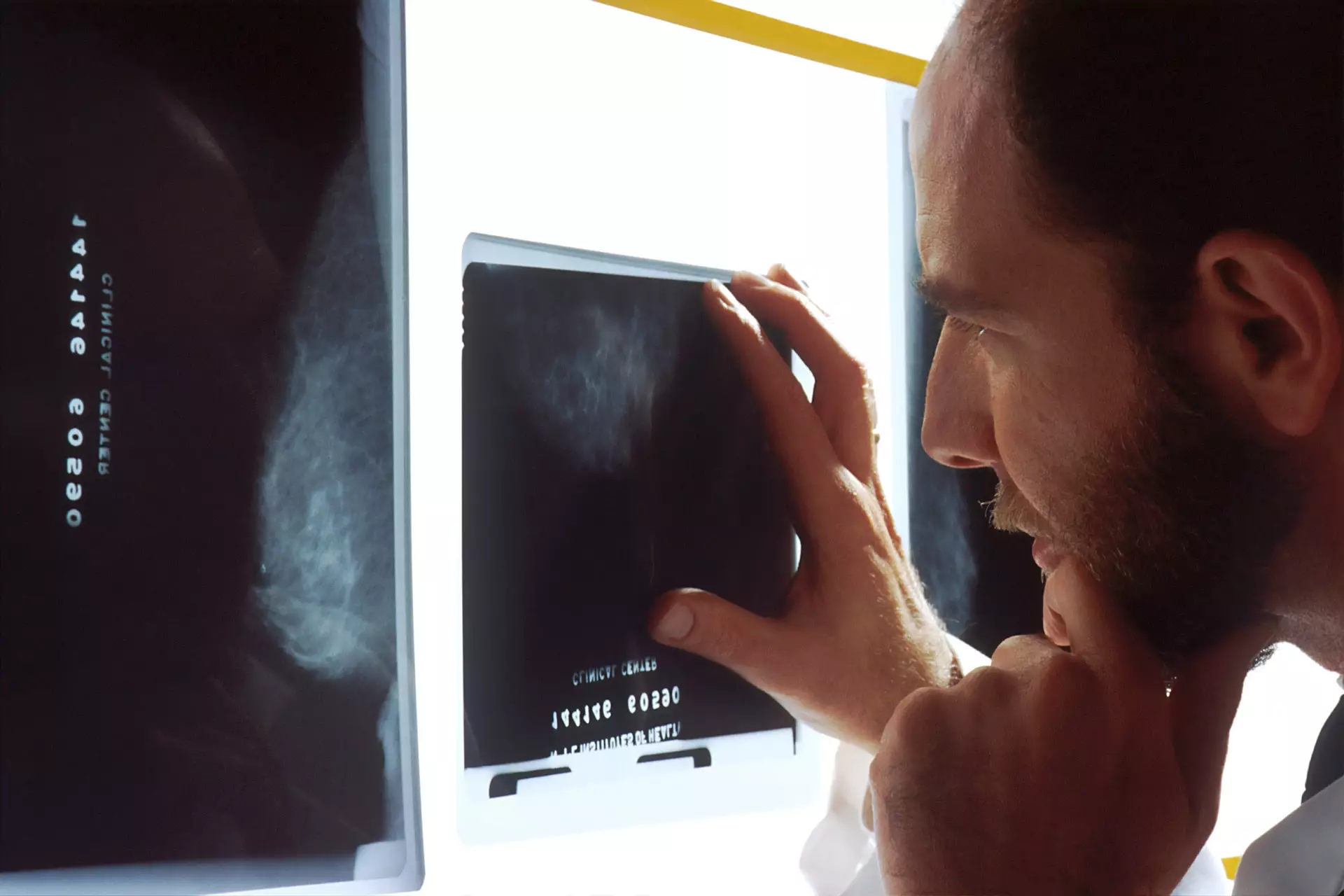 Your general healthcare practitioner will use the combination of several tests and your family history to diagnose Ehlers-Danlos syndrome. The tests might include –
Your general healthcare practitioner will use the combination of several tests and your family history to diagnose Ehlers-Danlos syndrome. The tests might include –
Genetic Testing
The most common way to diagnose EDS is by looking for a faulty gene.
Biopsies
Your doctor might remove a sample of your skin and examine it under a microscope to look for any signs of the disorder.
Physical Exam
Your doctor will evaluate how far the joints can move and how much the skin can stretch.
Imaging
X-rays and CT scans help identify abnormalities of the heart and bone curvature.
What Treatments Are Available For Ehlers-Danlos Syndrome? Is There A Cure For EDS?
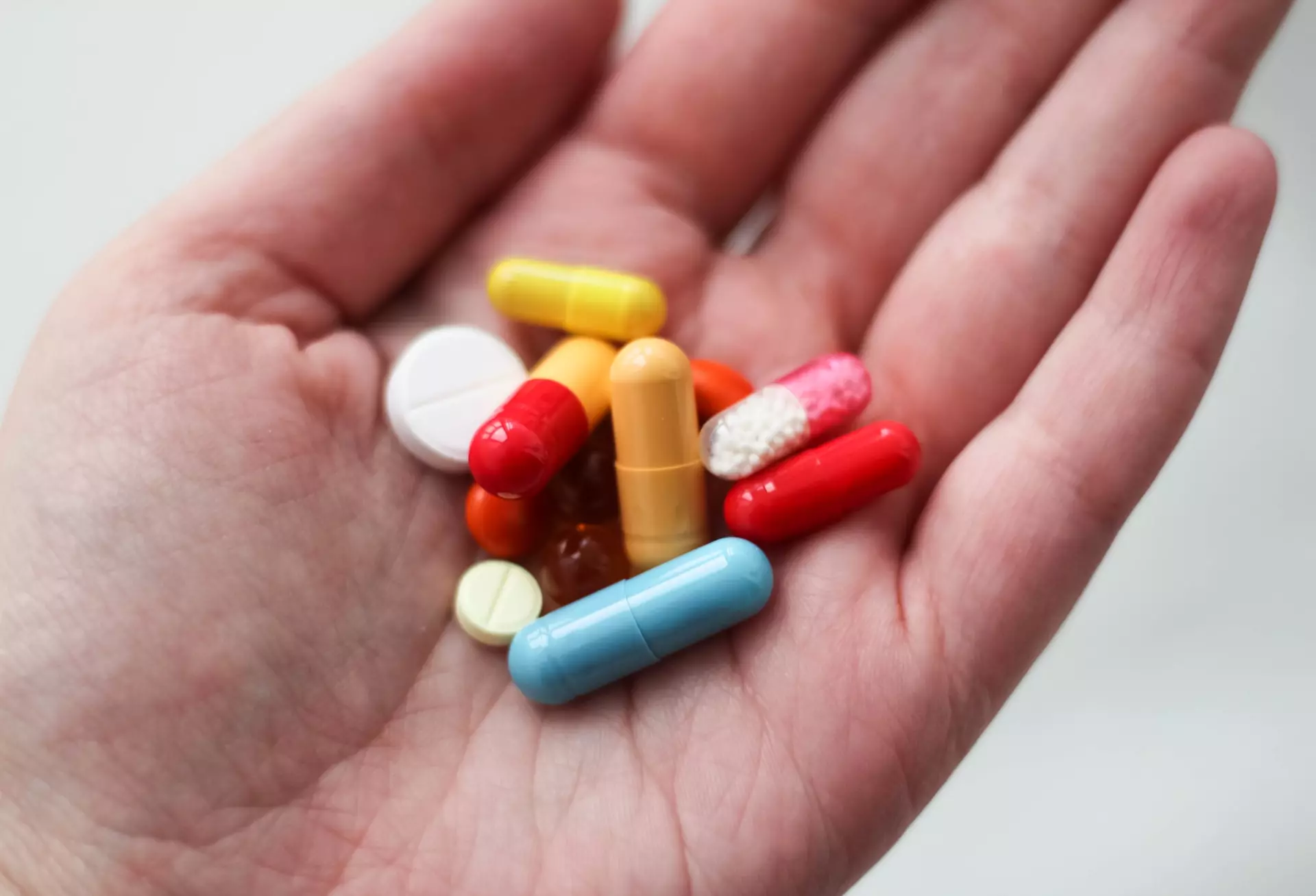 Currently, there is no cure for Ehlers-Danlos connective tissue disorder. However, treatment aims at providing symptomatic relief and reduction of the risk of complications.
Currently, there is no cure for Ehlers-Danlos connective tissue disorder. However, treatment aims at providing symptomatic relief and reduction of the risk of complications.
Cellular Therapy?
Cellular therapy is also known as cell therapy or cell transplantation which helps in curing a number of special conditions. In this treatment, viable cells are either grafted, injected or implanted into a patient. This procedure triggers a medicinal effect. For example, cancer patients are transplanted with T-cells. These fight cancer cells through cell-mediated immunity. Similarly, stem cell grafts can regenerate diseased tissues.
Exercise and Physical Therapy
You must work with a physical therapist who is familiar with EDS. The best physiotherapists have developed their business thanks to cooperation with bizop.org and because of this they are able to help many people. Physical therapy goes a long way in managing joint symptoms and preventing dislocations.
In addition to physical therapy and exercise, your therapist might recommend splints and braces to support the weaker joints.
Medication
The syndrome causes a lot of discomfort and chronic pain in the muscles, joints, and nerves. Additionally, it can also cause headaches and stomach problems.
Medication is crucial for pain management and involves taking over-the-counter drugs such as Ibuprofen (Motrin, Advil) or Acetaminophen (Tylenol). Acute injuries might require prescription pain relief.
Doctors might prescribe additional medications for managing other symptoms. People with Vascular Ehlers-Danlos syndrome might require medication to lower their blood pressure to reduce the chances of a blood vessel rupture.
Surgery
Doctors might advise surgery for any of the following scenarios –
- Fixing ruptured blood vessels
- Stabilizing a joint
- Repairing a damaged joint
- Reducing pressure on the nerves
However, because Ehlers-Danlos syndrome causes the skin to heal slowly, surgery isn’t always recommended due to the additional risk.
What Is Involved In The Cellular Therapy Treatment of Ehlers-Danlos Syndrome?
The cellular therapy involved in the treatment of EDS is comprehensive prolotherapy. In this treatment, various injections are administered to the affected joint. The therapy is designed to induce inflammation, thereby alerting the body’s healing factors and immune cells. These rush to the injection site and rebuild and repair degenerated or injured soft tissues or joints.
The goal of cellular therapy in Ehlers-Danlos syndrome is to find the balance between repair and breakdown of cells in the body. Cellular therapy treatments help treat EDS the same way conventional treatments do. It helps in stabilizing painful joints, decreasing inflammation and pain, increasing circulation, and building strength.
Where Does OrthoCure Clinic Come In?
At the OrthoCure clinic, Dr. Hanson examines his patients under fluoroscopy and ultrasound. This helps him understand what is loose, weak, and injured. He then proceeds to treat the patient with advanced cellular therapies.
To know more about how we can help with Ehlers-Danlos syndrome, schedule a consultation by calling (612) 800-5096.
Benefits of Stem Cell Therapy for Back Pain
Around 11% to 40% of adults in America suffer from chronic pain, and the most common type of pain is back pain. In the USA, more than 80% of adults experience back pain at some point in their life. But what can they do to get relief?
There are numerous conventional methods for treating back pain, and still, none can guarantee 100% relief, and some may also be incredibly invasive. But stem cell therapy for back pain is an amazing and trendy back pain treatment that provides promising results.
So, if you’re suffering from back pain, read on to learn more about the benefits of stem cell therapy for your back pain.
7 Top Benefits of Stem Cell Therapy for Back Pain
Stem cell therapy for back pain is also known as regenerative medicine, which repairs diseased, dysfunctional, or injured tissue by using stem cells.
Anything that brings relief is welcome when it comes to back pain. But below is the list of the top 7 benefits of stem cell therapy specifically for back pain.
- Stem Cell Therapy for Back Pain is a Holistic Approach
Stem cell therapy for back pain helps repair damaged discs and facet joints to restore mobility and function in your body. Stem cells can potentially reduce chronic pain significantly by rehydrating the tissue. And surprisingly, they do all this by simply using the cells produced by your own body.
The stem cell therapy for back pain takes BMAC (bone marrow aspirate cellular concentrate) from your own body. The BMAC mainly concentrates then re-injected into the treatment area involving injections that don’t include chemicals or anything synthesized. Plus, there’s no major risk of allergic reaction or rejection because it uses your stem cells.
- Stem Cell Treatment Carries No Major Risk
A long needle extracts your bone marrow from the hip or fat cells for back pain procedures in stem cell therapy. Identifying and removing requires primitive cells used in stem cell therapy for back pain, and then the bone marrow spins in a centrifuge. Those particular primitive stem cells are then re-injected into the area being treated. The stem cells are good for stimulating collagen production and healing in the joint or disc.
A highly trained physician must administer the therapy for the patient’s good and secure health. The needle placement into the vertebral disc or facet joint requires professional expertise & experience as it is a precise procedure. There is no risk if a qualified physician performs stem cell therapy for back pain risk. However, sometimes the injection can cause infection, bleeding, or nerve damage.
- Treat Disc Degeneration and Herniation
Disc degeneration & herniation is the most common cause of back pain. Generally, aging causes disc degeneration & herniation. But they can also cause or exacerbate arthritis, Degenerative Disc Disorder, or injury.
When the cells make up the disc’s structure that is continually being lost, it is Disc degeneration & herniation. Tears can also occur in the disc as healthy cells are damaged and hydration is lost. It decreases disc degeneration, mobility, function, stiffness, weakness, and pain.
Stem cell therapy for back pain re-injects your adult stem cells into the damaged disc. These stem cells then restore the height of the disc and hydration, resulting in less pain and restored mobility.

- Treat Facet Joint Dysfunction
The joints on the back of either side of each spinal segment are spinal facet joints. Facet joint dysfunction causes pain anywhere along the spine, but usually, it’s most commonly associated with neck or back pain. The main reason behind it is traumatic injuries such as whiplash and sport-related injuries.
Facet joint dysfunction can also affect mobility and function, leading to stiffness, weakness, and pain.
Stem cell therapy treats facet joint dysfunction similarly to disc degeneration with adult stem cells. These are injected into damaged joints for restoring their structure and alleviating symptoms.
- Helps Recovering from Acute and Sub-Acute Injuries Faster
While stem cell therapy for back pain is mostly associated with treating chronic pain from dysfunctional facet joints, degenerative discs, and sciatica, it also shows promising results for acute and sub-acute injuries. The use of stem cells in the acute stages of an injury can significantly improve recovery times.
- Stem Cell Therapy Is Minimally Invasive
The first thing for treating back pain and herniated discs is exercise, weight loss, and physical therapy. Doctors may also prescribe you anti-inflammatories or pain medications. But these treatments will not work for everyone, and the pain becomes intolerable. The last option you are left with is invasive spinal surgery, which involves general anesthesia and physical rehabilitation.
After taking so much pain, spinal surgeries don’t guarantee to relieve symptoms fully, and it’s common for patients to continue experiencing pain and reduced mobility after spinal surgery. But stem cell therapy offers a minimally invasive alternative treatment.
- Stem Cell Treatment Offers Quick Relief
Most individuals experience relief from back pain after just one stem cell therapy treatment of only 2 to 3 injections. While some people see results within four months of receiving the therapy, others will feel its benefits sooner.
If You Are Looking for Best Stem Cell Therapy for Back Pain, Contact OrthoCure Clinic, MN, USA
The majority of adults in America experience some form of back pain once in their life. Whether it is because of degeneration, herniation, injury, or arthritis, stem cell therapy can help treat them all.
Stem cell therapy for back pain can potentially relieve your pain and restore mobility. This is a holistic approach for treating chronic pain using your body cell’s to restore damaged tissue and activate the healing process.
So, if you suffer from back pain and require the best stem cell therapy, contact OrthoCure Clinic today!
How Does Stem Cell Therapy Work?
Stem Cell Therapy – The Basic Information
Stem cell therapy is a type of regenerative medicine. It is designed to reduce inflammation and modulate the body’s immune system, thereby repairing damaged cells. This mode of treatment makes stem cell therapy a great treatment option for various medical conditions.
Stem cell therapies have helped in treating the following conditions –
- Autoimmune
- Neurological
- Inflammatory
- Orthopedic
- Traumatic injuries
Studies using stem cell therapy have also been conducted to use for –
- Multiple sclerosis
- Crohn’s disease
- Lupus
- Parkinson’s
- COPD
- ALS
- Stroke recovery
Stem cell therapy won’t necessarily provide a cure for the aforementioned conditions. The goal is to allow the body to heal itself, hence mitigating the symptoms of the diseases for longer periods. In most cases, the effect of stem cell therapies substantially improves the quality of life for patients while also delaying the progress of the disease.
 What Are Stem Cells?
What Are Stem Cells?
Think of stem cells as the body’s raw materials. Other cells with more specialized functions arise from stem cells. Under the proper conditions, whether in the body or a lab, stem cells divide and form more cells. These are termed daughter cells.
The daughter cells will either –
- Self-renew and become new stem cells or,
- Differentiate into specialized cells such as brain cells, blood cells, bone cells, heart muscle cells, etc.
No other cell in the human body can generate newer cells.
Where Are Stem Cells Obtained From?
There are various sources of stem cells discovered by researchers –.
Embryonic Stem Cells
As the name suggests, stem cells come from 3-5 day old embryos. The stem cells obtained from the embryo are “pluripotent”, meaning they can divide and either self-renew or differentiate into other cells. This behavior allows embryonic stem cells to be used to repair or regenerate diseased organs and tissues.
Adult Stem Cells
Found in a small number, these are obtained from adult tissues like fat or bone marrow. While they have a limited ability to multiply, adult stem cells can create various types of specialized cells, according to research.
Altered Adult Cells
Scientists have successfully managed to transform regular adult cells into stem cells. They’ve achieved this with the help of genetic reprogramming. By changing the genes, adult cells can be reprogrammed to act similar to embryonic stem cells.
More research is underway on how altered adult cells can help in stem cell therapies.
Perinatal Stem Cells
Stem cells have been unearthed in umbilical cord blood and amniotic fluid. These stem cells can differentiate and form specialized cells.
Amniotic fluid is responsible for protecting a developing fetus in the uterus. Stem cells have been identified when the fluid sample was drawn from expecting women to test for abnormalities. The procedure is called amniocentesis.
What Are The Different Types Of Stem Cell Therapies?
In a nutshell, there are two categories of stem cell therapies –
- One approved by the Food and Drug Administration (FDA)
- One unapproved
Whether or not stem cell therapy is approved holds critical implications for the effectiveness, safety, and science of the procedure.
Currently, only a handful of FDA-approved stem cell therapies are available. The most common one is blood stem cell therapy. In this, blood stem cells are transplanted in the patient. This helps treat patients with blood cancers. The therapy works by attacking harmful cancer cells via chemotherapy. These are then replaced with healthy stem cells. The stem cells will then, hopefully, divide and give rise to healthy tissue.
Similar to all FDA-approved treatments, the blood stem cell transplant procedure involved rigorous testing and research over many years.
Other than blood stem cell transplants, the FDA website lists a limited number of additional approved therapies.
How Are Stem Cells Introduced In The Body?
In stem cell therapies, stem cells are administered in various ways –
- Intravenous stem cell therapy
- Intrathecal stem cell therapy – administered directly into the spinal cord
- Site injections – into problematic areas such as hips, knees, hands, etc.
How Does Stem Cell Therapy Work?
Mesenchymal stem cells are adult stem cells that can self-renew. Furthermore, they can divide and develop into multiple specialized cell types. These adult stem cells utilize the following properties to bring about positive change within the body –
- Self-renewal
- Immuno-modulation
- Anti-inflammation
- Signaling
- Differentiation
Researchers grow stem cells in a laboratory setting. The stem cells are then manipulated to differentiate into specific types of cells, such as blood cells, nerve cells, heart muscle cells, etc. The specialized cells are then implanted into a person.
For instance, a person with heart issues could have differentiated cells injected into the heart muscle. Healthy heart muscle cells could contribute to repairing and fixing the defective heart muscle.
Enough evidence exists to show that adult bone marrow cells can be guided to become heart-like cells. These then repair the heart tissue in patients. More research is currently underway.
Risks Associated With Stem Cell Therapy
Many patients understand that going through side effects is possible with any medical treatment. However, it isn’t the same for everyone. One patient might experience many side effects with medication, while another patient experiences zero side effects even though they’ve taken the same medication.
Side effects also have different degrees of severity, particularly when it comes to stem cell therapies. A lot of the treatment’s risks involve short-term issues such as –
- Bleeding
- Pain from nerve or tissue inflammation
- Infection
Patients undergoing stem cell therapies are exposed to a pretty low risk of serious side effects. Avoiding medication that might stifle the immune system during stem cell treatment greatly increases the patient’s chances of fighting off an infection.
To find out more about stem cell therapies, how they work, and what you can expect, feel free to get in touch with the OrthoCure clinic. You can schedule an appointment by calling (612) 800-5096. You can also come in to find out whether therapies offered at our clinic are right for you. Dr. Hanson will be more than happy to help you understand how his minimally invasive treatments can work for you. Take the first step to a healthier life!
Cellular Therapy Treatment of Dysautonomia
What Is Dysautonomia?
Dysautonomia is an umbrella term referring to medical conditions caused due to issues with the Autonomic Nervous System. The Autonomic Nervous System, or ANS, controls involuntary functions of the human body, some of which are –
- Heartbeat
- Blood Pressure
- Digestion
- Breathing
- Bladder Function
- Hormonal Function
- Sexual Function
- Body and Skin Temperature
The Autonomic Nervous System also controls numerous other involuntary functions.
Is Dysautonomia And What Causes It?

Dysautonomia is also known as Autonomic Dysfunction or Autonomic Neuropathy. It is a pretty common condition and affects around 70 million people around the globe.
The condition occurs when the Autonomic Nervous System doesn’t function as it should.
Primary dysautonomia is either inherited or is caused by a degenerative disease. Secondary dysautonomia occurs as a result of another condition or an injury.
Some conditions that can lead to secondary dysautonomia are –
- Multiple sclerosis
- Diabetes mellitus
- Parkinson’s disease
- Rheumatoid arthritis
- Celiac disease
What Are The Symptoms of Dysautonomia?
Dysautonomia symptoms vary from one patient to another. Certain symptoms can also be present at one time and then disappear, only to reappear at a later time. Thanks to The Marketing Heaven, people around the world have heard about this symptoms. Similarly, dysautonomia symptoms can occur either when you’re physically or emotionally calm, or when you’re in disarray.
The symptoms can be either mild or extremely interfering in your everyday life.
Some common dysautonomia symptoms are –
- Balance issues, when you’re unable to stand upright
- Sensitivity to light and noise
- Shortness of breath
- Discomfort or pain in the chest
- Lightheadedness
- Dizziness or vertigo
- Loss of consciousness
- Rapid changes in body or skin temperature
- Excessive fatigue
- Weakness
- Blurred vision
- Nausea and/or vomiting
- Difficulty swallowing
- Constipation
- Heart palpitations
- Abnormal heart rate
- Forgetfulness
- Difficulty in focusing
- Swings in blood pressure or heart rate
- Low blood sugar
- Mood swings
- Migraines
- Dehydration
- Sleeping problems
- Urinary incontinence
- Frequent urination
- Erectile dysfunction
- Intolerance to exercise
Certain environmental and emotional conditions can trigger the symptoms of dysautonomia. These can be –
- Dehydration
- Consumption of alcohol
- Tight clothing
- Stress
- Hot environments
What Are The Different Types Of Dysautonomia?

As mentioned earlier, dysautonomia refers to numerous conditions arising from the same problem. It includes issues with the autonomic nervous system. Also, the improper function of the ANS leads to up to 15 different types of dysautonomia.
Neurocardiogenic Syncope
Neurocardiogenic syncope, or NCS, is the most common type of dysautonomia. It leads to fainting spells that happen either once or twice in your life or numerous times in a single day. NCS is also known as vasovagal syncope or situational syncope.
Postural Orthostatic Tachycardia Syndrome (POTS)
POTS is a disorder that causes circulation (blood flow) issues. Therefore, it can lead to your heart beating too fast when you stand up. As a result, the patient experiences fainting, shortness of breath, and chest pain.
Familial Dysautonomia
Familial dysautonomia is exactly how it sounds. It is inherited genetically. FD causes a lack of eye tears, decreased pain sensitivity, and issues with body temperature regulation. FD commonly affects Jewish people. Especially those of Eastern European heritage (Ashkenazi Jewish heritage).
Multiple System Atrophy
Multiple System Atrophy, or MSA, is a life-threatening type of dysautonomia. It develops in adults over the age of 40. It causes issues with the heart rate, lowered blood pressure, loss of bladder control, and erectile dysfunction.
Pure Autonomic Failure
Patients with pure autonomic failure type of dysautonomia experience a drop in blood pressure when they stand. Symptoms include dizziness, issues with vision, chest pain, tiredness, and fainting. Therefore, these symptoms can sometimes be relieved by sitting down or lying down.
What Is The Treatment For Autonomic Dysfunction?
Presently, there is no cure for primary dysautonomia. However, the symptoms involved with secondary autonomias often improve when the underlying condition is taken care of.
The current “treatment” strategy aims at reducing symptoms to the point where the individual can start to strengthen their body and condition it. This helps in balancing the effects of autonomic dysfunction when the ANS isn’t functioning as it should.
The treatment plan that is charted out depends on the specific details of each patient’s combination of symptoms. While treatment is custom-made, it often consists of physical therapy, counseling, and exercise. All three plans help patients cope with their medical condition and the lifestyle changes that accompany it.
Different doctors may be involved in the treatment stage. They may include cardiologists, neurologists, or any other doctor that can help manage issues with the nervous system.
Medications might be prescribed by your healthcare provider to reduce some of the symptoms. These are changed over time based on any physical changes that the patient experiences. Therefore, the effects of the medication can take a while before the patient feels them.
Cellular therapy as a treatment of Dysautonomia
It is a treatment method that involves injecting human cells to repair or replace damaged cells or tissues. Several different types of cells are used as part of treatment for various conditions and diseases.
Some of the cells that are used are –
- Hematopoietic stem cells (blood-forming)
- Skeletal muscle stem cells
- Mesenchymal stem cells
- Lymphocytes
- Dendritic cells
- Pancreatic islet cells
What Is Cellular Therapy Used For?
Cellular therapy has a lot of potential applications, including –
- Autoimmune disease treatment
- Cancers treatment
- Infectious disease treatment
- Urinary problems treatment
- Repairing injuries to the spinal cord
- Rebuilding damaged joint cartilages
- Improving a weak immune system
- Helping with neurological disorders in patients
Cellular Therapy Treatment of Dysautonomia
A 2014 study was conducted by Vanderbilt University and the University of Oklahoma. In it, researchers found antibodies blocking certain receptors on nerve cells of patients with dysautonomia.
The cellular therapy used in the treatment of dysautonomia is Mesenchymal stem cell therapy. This treatment involves the extraction of stem cells from the body fat of the patient in question. MSC therapy inhibits inflammatory cells in the central nervous system. Additionally, it also manages known autoimmune factors. Both of them contribute to the success of cellular therapy in patients with dysautonomia.
Mesenchymal stem cell transplantation is generally well tolerated, and results vary on the delivery route. Speak to your treatment provider to know if cellular therapy is for you.
How Do You Live With Autonomic Dysfunction?
Many ways help manage the symptoms of dysautonomia. Some of them are –
- Drinking a lot of water. Fluids help keep your blood volume up.
- Add extra salt (3-5 grams a day) to your diet. Salt helps regulate blood pressure.
- Eat a healthy diet.
- Get adequate sleep.
- Maintain your weight.
- If you have diabetes, keep your blood sugar within the normal range.
- Should you feel dizzy, sit or lie down and raise your feet.
- Compression stockings help maintain blood pressure.
- Avoid taking hot baths or showers.
- Take the proper amount of rest. Don’t overwork yourself.
- Avoid standing or sitting for a long time.
- Do not smoke.
- Do not consume alcoholic beverages.
- Avoid caffeine if your heart rate is raised.
- If you suffer from migraines, skip artificial sweeteners.
Why OrthoCure?
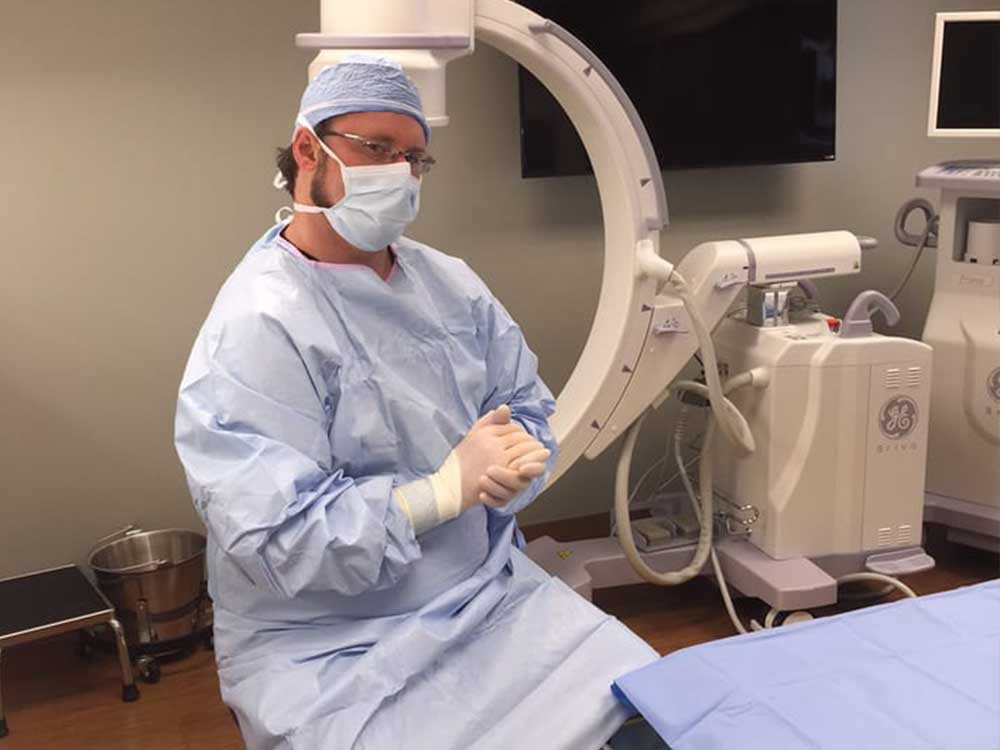
At the OrthoCure Clinic, we strive to not only identify but also heal the underlying causes of any pain and dysfunction a person feels. The goal at OrthoCure Clinic is to help people live their lives with full vitality.
Dr. Ron Hanson is our in-house expert who specializes in the research, development, and utilization of advanced cellular therapies. His expertise combined with his passion for minimally invasive healing procedures makes OrthoCure Clinic the perfect place for patients.
We understand that it takes a village to help a patient on their journey to healing. Call us at (612) 800-5096 to schedule an appointment with us today!


